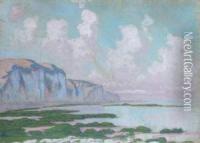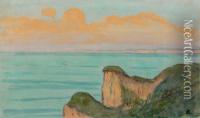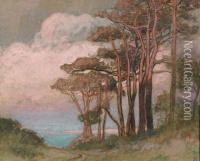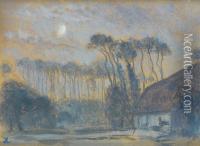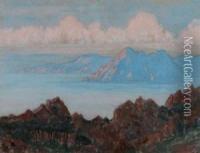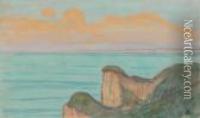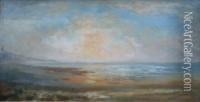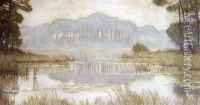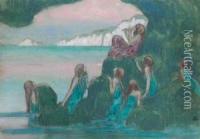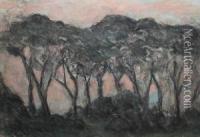Jean-Francis Auburtin Paintings
Jean-Francis Auburtin was a French Symbolist painter born in Paris on April 2, 1866. He studied art under the tutelage of the renowned painter Jean-Léon Gérôme at the École des Beaux-Arts in Paris. Auburtin was deeply influenced by the Symbolist movement, which sought to express ideas and emotions through powerful symbolic imagery rather than realistic depictions.
During his career, Auburtin became known for his landscapes and seascapes that often conveyed a mystical or dream-like quality. His work was characterized by a strong use of color and a fluidity of form that sought to capture the essence of the natural world rather than its exact appearance. He was particularly inspired by the coastlines of Brittany and Normandy, which became recurring subjects in his paintings.
Auburtin's style was also influenced by the work of the Impressionists, although he maintained a distinct approach that aligned more closely with Symbolist principles. He participated in various exhibitions, including the Salon de la Rose+Croix, which was established by Joséphin Péladan and dedicated to Symbolist art.
The artist's pursuit of capturing the spiritual in nature led him to travel extensively, seeking new landscapes and seascapes to inspire his work. Auburtin's fascination with the sea is reflected in one of his most famous series of murals which he painted for the oceanographic museum of Monaco upon the invitation of Prince Albert I of Monaco.
Despite his talent and contributions to the Symbolist movement, Jean-Francis Auburtin remains a less well-known figure compared to his contemporaries. His works, however, continue to be appreciated for their poetic and evocative qualities. Jean-Francis Auburtin passed away on April 28, 1930, in Paris. His art lives on and can be found in various art collections and museums throughout France.
